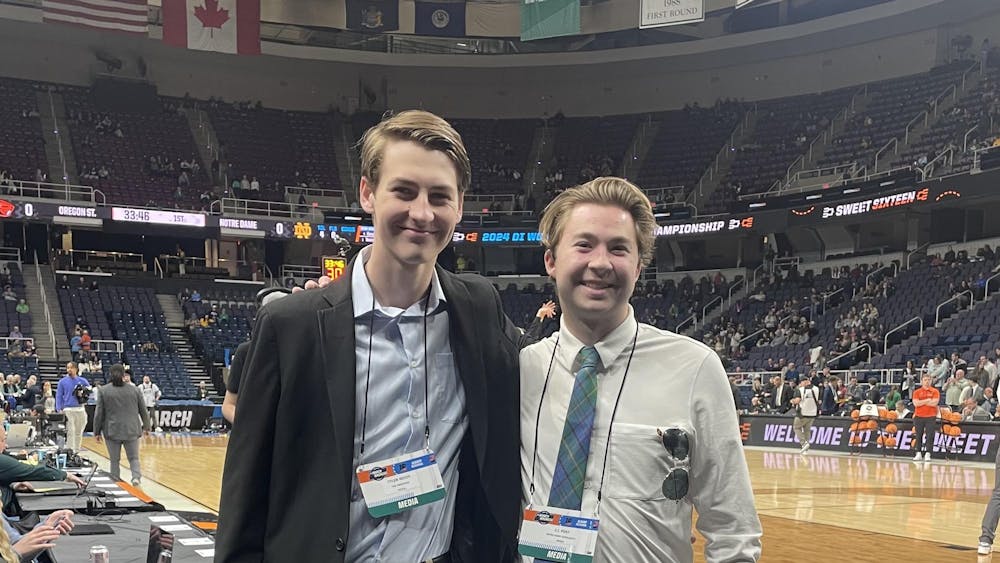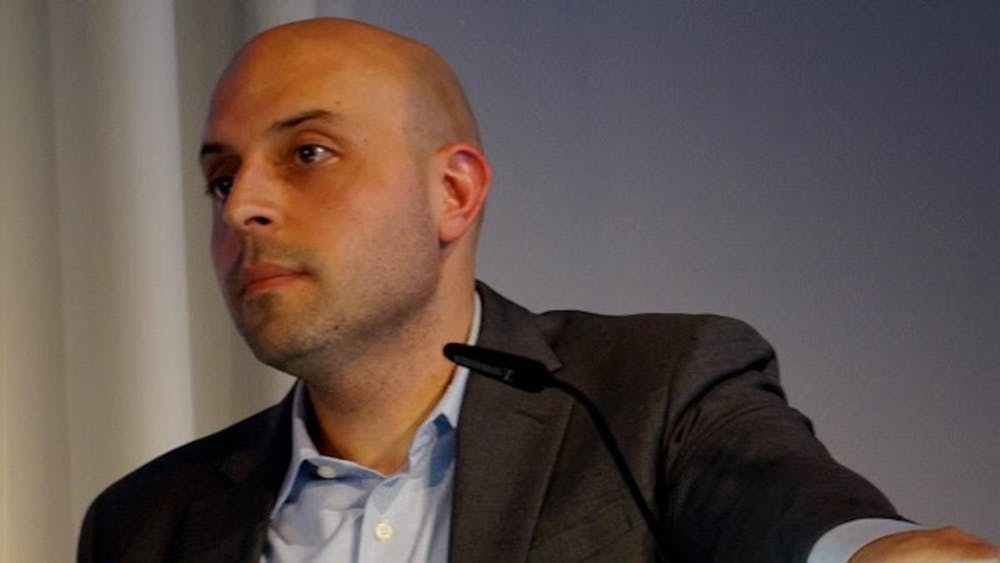In my last column, I wrote about how a parallel can be discerned between the judicial “finding” of law (also known as the “declaratory theory” of law) and the way that some friends are found rather than made. But a conversation with a dear found friend of mine made me realize that that’s not the end of the story.
Both this dear found friend of mine and I captained our respective quiz bowl teams in high school and are members of the quiz bowl team here at Notre Dame. For those who don’t know what quiz bowl is: imagine Jeopardy!, but there’s teams, you don’t pick categories and typically money is not involved. Races to the buzzer to demonstrate superior knowledge of a hodgepodge of things, plus the study of that hodgepodge to prepare, is truly what makes quiz bowl an enjoyable experience, and the Notre Dame team practices every Tuesday and Wednesday from 9-11 p.m. in LaFun. This weekend, I had the great privilege of competing (my first time on the buzzer since high school) as one of the four members of Notre Dame’s A-team, and while eight of the 10 games ended up giving me and the rest of the team a dose of humble pie, as a proud alumnus of Michigan State University, it gave me great joy that my first victories at the collegiate level were a sweep of a two-game series against the University of Michigan.
But I digress. The preeminent organization in quiz bowl, the one that has had good question production values for the longest time, is National Academic Quiz Tournaments, or NAQT for short. (I’ve always spelled out the letters, but other friends of mine inform me that the acronym can take the colloquial pronunciation of “nacket,” as in “NAQT packet” for a packet of questions written by NAQT.) NAQT got its start by writing questions that are “pyramidal” in style, putting more difficult clues before easier ones and making it so that those who have more knowledge about an answer are more likely to be the ones buzzing in first. They’ve since expanded their empire, hosting national tournaments at the middle school, high school and collegiate level, and writing question sets that are used at regular-season tournaments all across the country. From time to time, in addition to all of this, the members of NAQT’s exceptionally capable editorial board put out a column called “You Gotta Know” that typically gives a list of items in a set that quizbowlers should know about, as well as some background on each of those items. Examples include “geologic time periods,” “Baroque painters" and “ancient Greek places.”
One older “You Gotta Know” column was about “common mistakes.” And one of the “common mistakes” that NAQT flagged was about the Immaculate Conception. When my friend noted this point to me, something clicked inside my head. Since my elementary school days, I’ve understood that the Immaculate Conception refers to Mary’s conception without the stain of original sin, but many quizbowlers, like many people in general, misconstrue the Immaculate Conception to refer instead to Mary’s conception of Jesus. What clicked was a hypothesis as to why this confusion persists: if those who misconstrue the Immaculate Conception and those who are unaware of the theological significance behind the Annunciation are the two circles of a Venn diagram, there is a large overlap in the middle, and much confusion would be avoided if more people knew that the Annunciation, nine months before Christmas exactly, covers analogously the same material.
But it begs the question: why isn’t it the feast of the Immaculate Conception of Jesus? Why don’t we commemorate the fact that from the moment that the Word became flesh and dwelt among us, Jesus, fully God and fully man, was without original and actual sin? We instead elevate the Annunciation, which denotes the archangel Gabriel declaring to the Blessed Mother that these things will happen. And herein lies the rub. Whether intentional or (more likely) otherwise, the Feasts of the Immaculate Conception of Mary and the Annunciation of the Lord are yet another analogy that provides support to the notion that judges find law rather than make it.
Here’s why: I argue that St. Gabriel the Archangel is like what declaratory theory says judges should be. His role in the Annunciation can be contrasted with what we celebrate in the Immaculate Conception. The Immaculate Conception emphasizes what God, in the three Persons of the Trinity, did. Our Heavenly Father, knowing in his divine Providence that His Son would soon be sent, by way of Mary, to save the rest of the world, allowed that salvific grace to preserve the Blessed Mother from the stain of even original sin. This mystery of faith is more like lawmaking, because it emphasizes this belief about how Mary was created and the fact that it’s still Jesus that is doing the actual saving there. But the Annunciation is a little different, because that feast’s very name invokes thoughts of the archangel Gabriel. Gabriel was the one who did the announcing, informing Mary that she would bear a son, and he would be Emmanuel — God with us. Gabriel’s not the one actually doing the work here, since we believe as Catholics that Jesus was conceived “by the Holy Spirit.” In both Mary’s and Jesus’s conceptions, God is doing the work of preserving Mary and Himself from the stain of original sin. But since Gabriel announces that fact to Mary, we honor him on March 25 each year for engaging in that related work — just like we respect judges for finding, rather than making, law.
So perhaps we students of the law and eventual members of the legal profession might take up (in addition to the wonderful-in-his-own-right St. Thomas More) an unlikely patron in St. Gabriel the Archangel. May he give us the grace to know when God might asking us to do something less like law-finding than like law-making, and then give our Heavenly Father the room to take care of the rest.
Devin is a member of the Notre Dame Law School’s class of 2023. Originally from Farwell, Michigan, he is a 2020 graduate of Michigan State University’s James Madison College. In his free time, he sings with the Notre Dame Folk Choir and discusses the legal developments of the day with anyone who will listen. Inquiries into his surplus of law journal articles and note ideas can be directed to dhumphr2@nd.edu or @DevinJHumphreys on Twitter.













